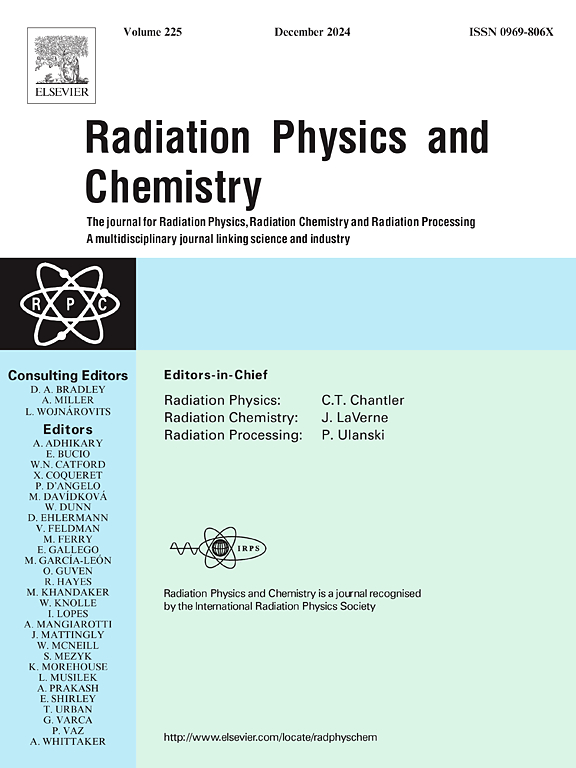Patient-specific skin dose evaluation in breast cancer radiotherapy: A Monte Carlo study
IF 2.8
3区 物理与天体物理
Q3 CHEMISTRY, PHYSICAL
引用次数: 0
Abstract
Introduction
Accurate assessment of skin dose in radiation treatment of breast cancer is very important. The analytical algorithms of treatment planning systems are limited in calculating the surface dose where electron equilibrium is not established. Measuring the skin dose requires a special dosimeter, which is time-consuming. Monte Carlo simulation has been developed as a golden method for calculating the skin dose. This study aimed to assess the factors affecting the skin dose in radiotherapy of intact breast cancer by developing a computational Monte Carlo framework.
Methods
The BEAMnrc-based model of 6 MV beam of a Siemens Primus linac was developed and validated. The skin dose in tangential breast fields was calculated and measured in the CIRS phantom by simulation and film dosimetry. The effect of treatment parameters, including field size, obliquity, skin-to-surface distance and the wedge angle, on surface dose was investigated.
Results
The calculated beam model with electron energy 6.7 MeV and FWHM 3.0 mm were validated. The mean relative skin dose differences between calculated and measured for inside the field was 17.24%, and for out-of-field points on the contralateral breast, was 21.05%. Increasing the open field size, increased the skin dose. By increasing the gantry angle from 50° to 65°, the skin dose increased by 178% only along the contralateral breast. The in-field and over the contralateral breast skin dose changed, by increasing the SSD from 95 cm to 105 cm. By changing the wedge angle from 15° to 45°, the in-field skin dose was reduced by 9.21%.
Conclusion
Several limitations make surface dosimetry challenging in radiotherapy of breast cancer. The computational Monte Carlo framework developed in this study, including the Primus linear accelerator head model with the patient's treatment plan specifications and the patient's tomographic phantom, can be used to measure the skin dose in radiation therapy for various cancers.
求助全文
约1分钟内获得全文
求助全文
来源期刊

Radiation Physics and Chemistry
化学-核科学技术
CiteScore
5.60
自引率
17.20%
发文量
574
审稿时长
12 weeks
期刊介绍:
Radiation Physics and Chemistry is a multidisciplinary journal that provides a medium for publication of substantial and original papers, reviews, and short communications which focus on research and developments involving ionizing radiation in radiation physics, radiation chemistry and radiation processing.
The journal aims to publish papers with significance to an international audience, containing substantial novelty and scientific impact. The Editors reserve the rights to reject, with or without external review, papers that do not meet these criteria. This could include papers that are very similar to previous publications, only with changed target substrates, employed materials, analyzed sites and experimental methods, report results without presenting new insights and/or hypothesis testing, or do not focus on the radiation effects.
 求助内容:
求助内容: 应助结果提醒方式:
应助结果提醒方式:


